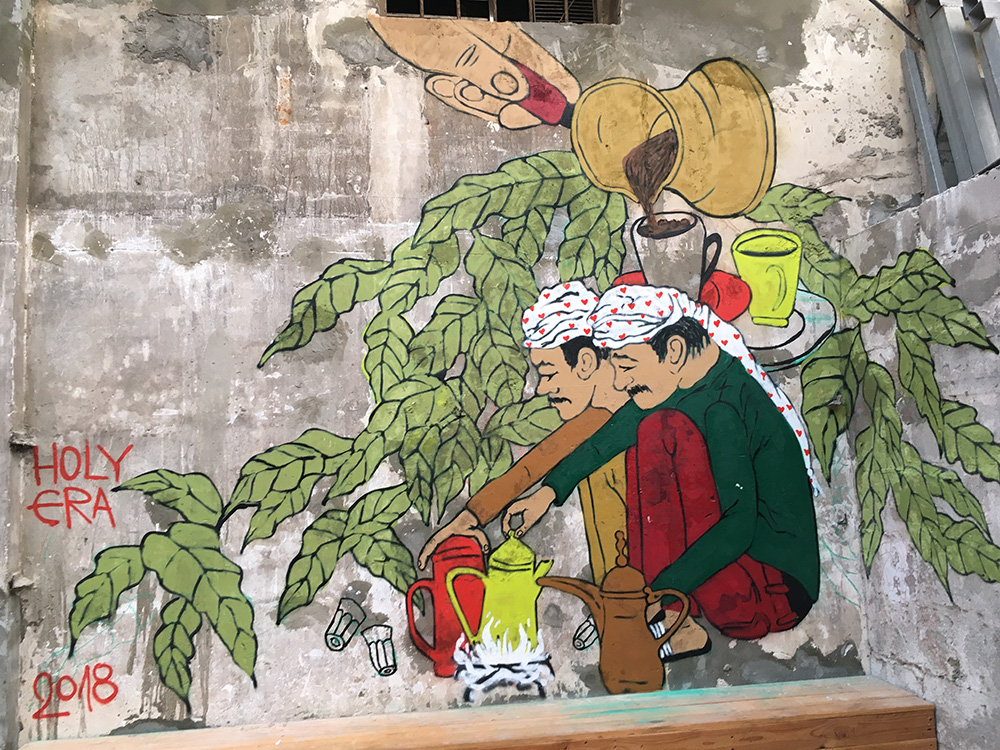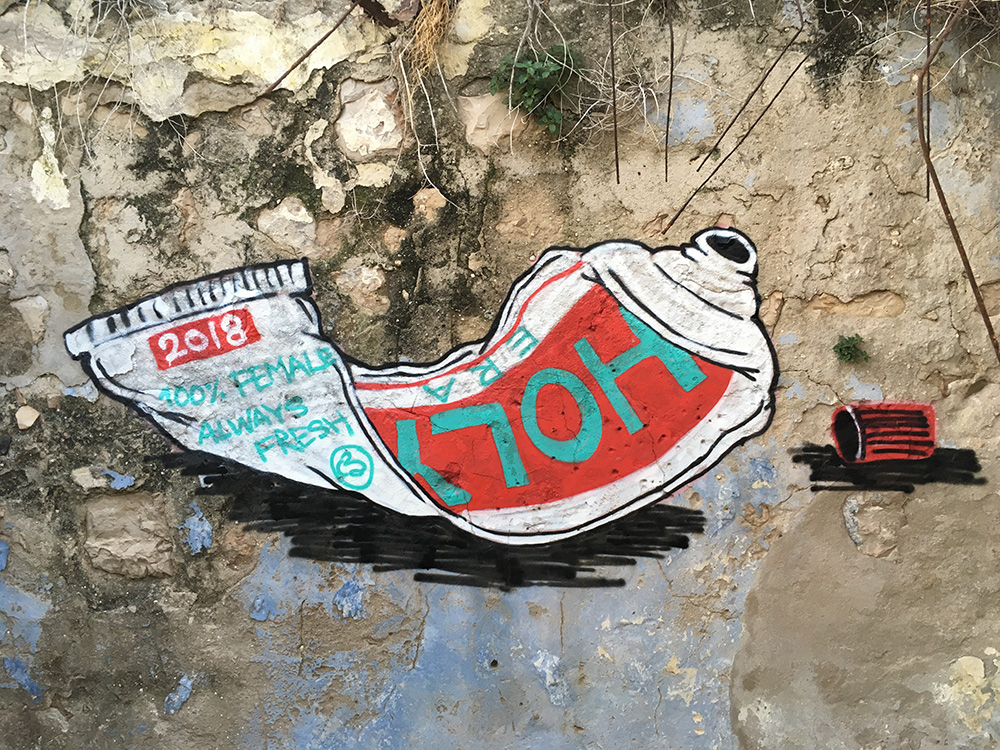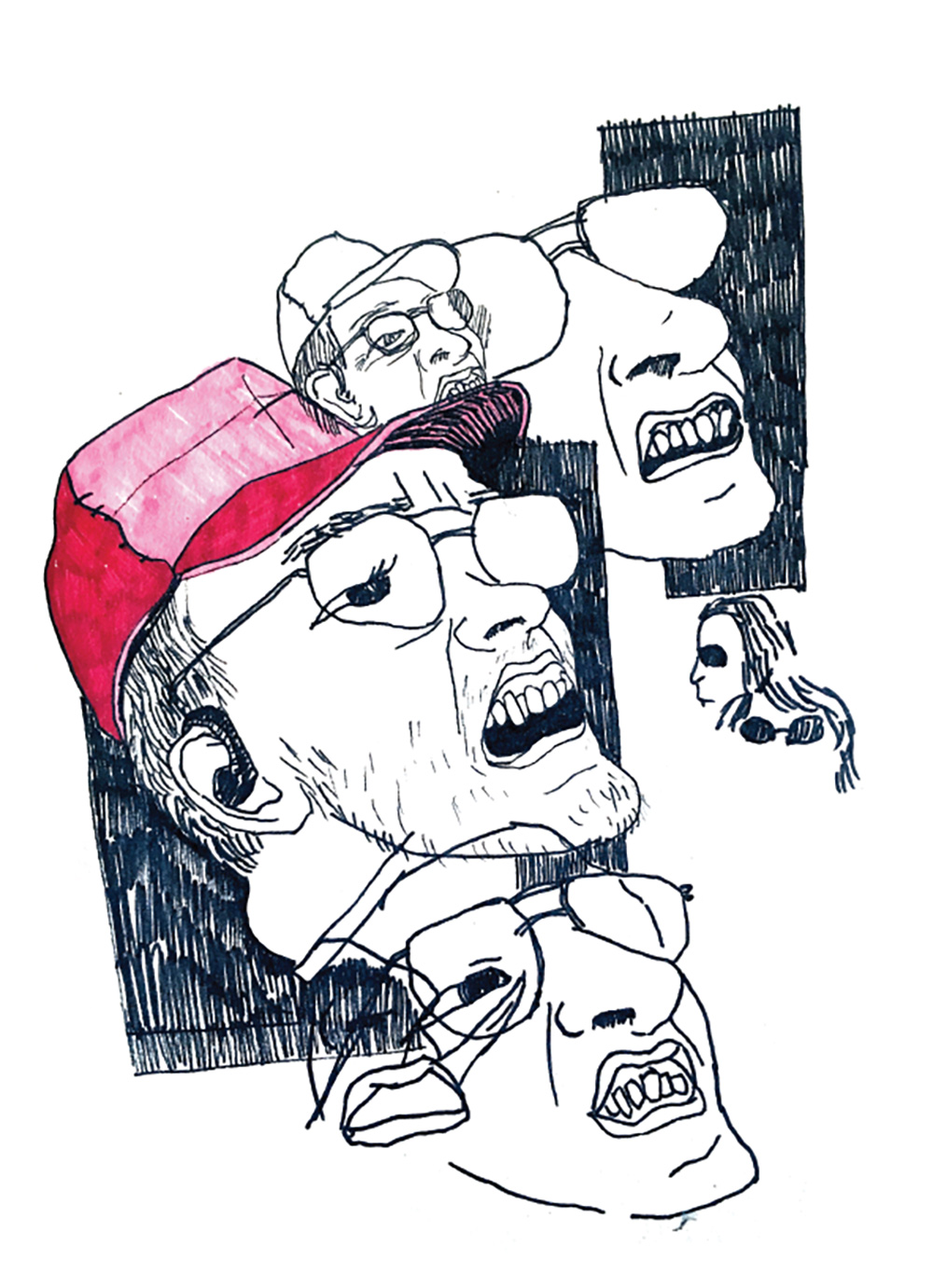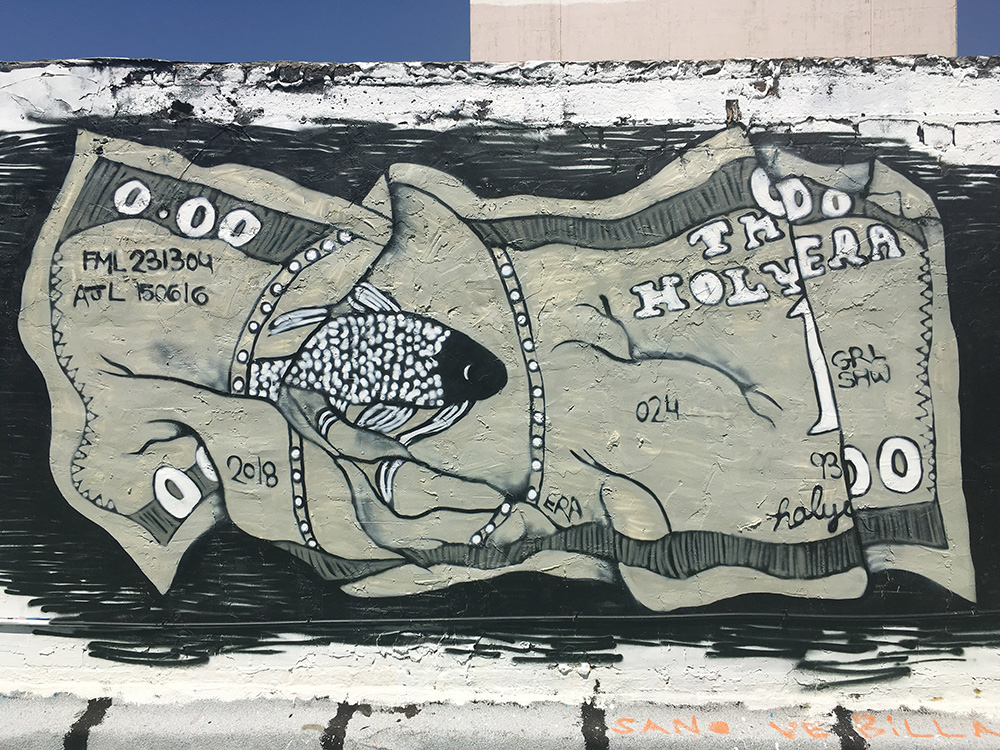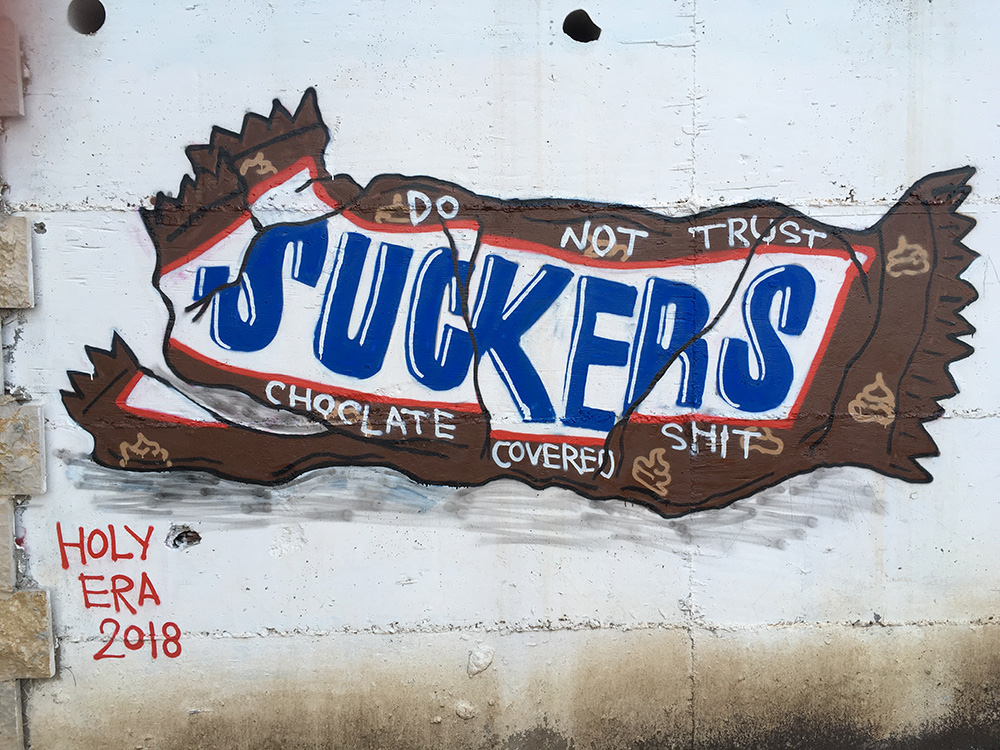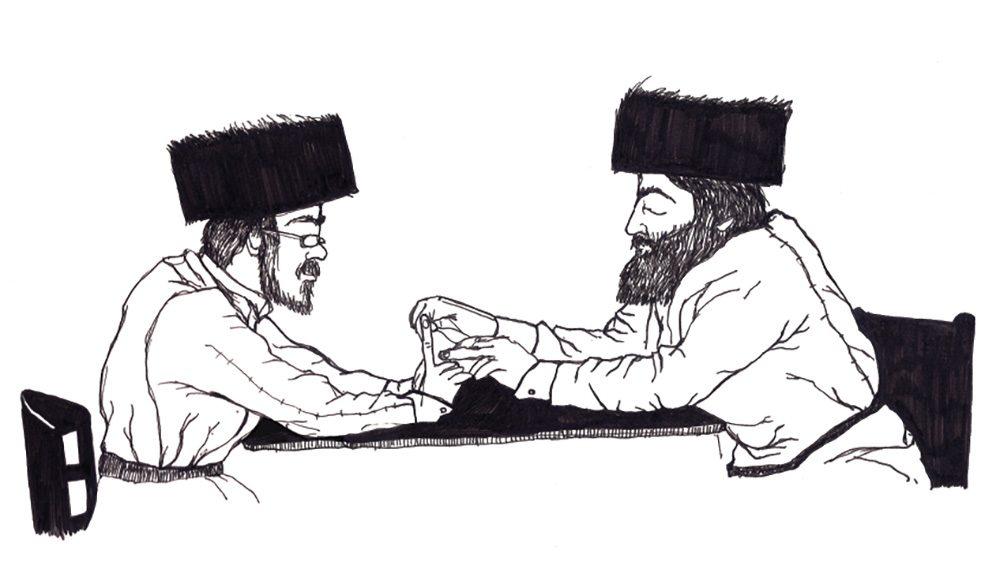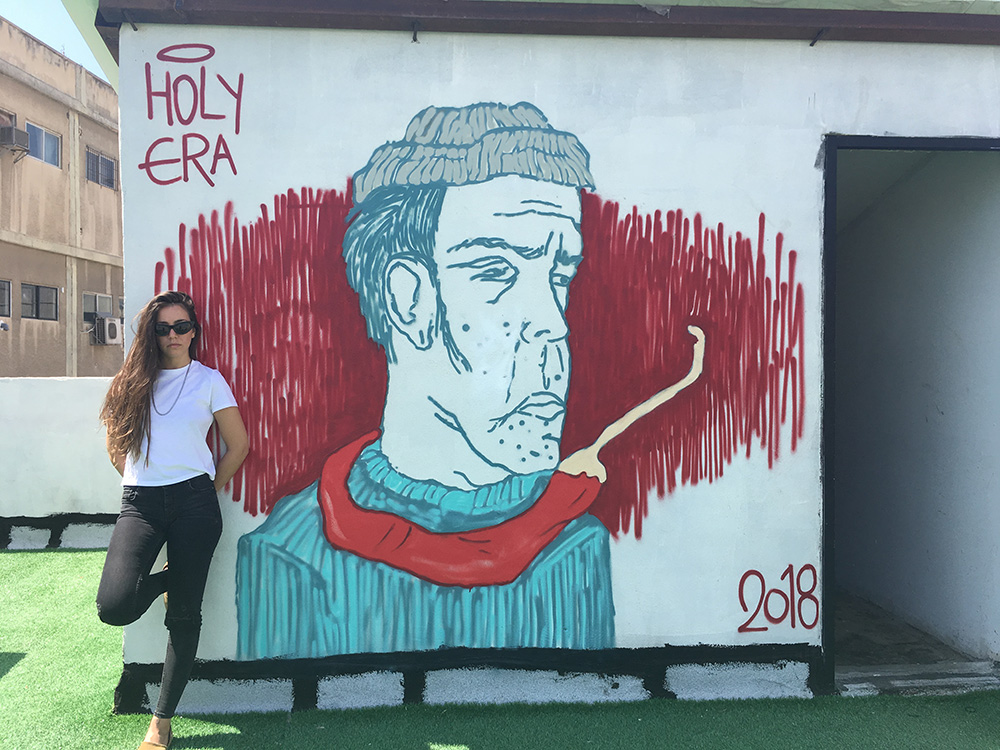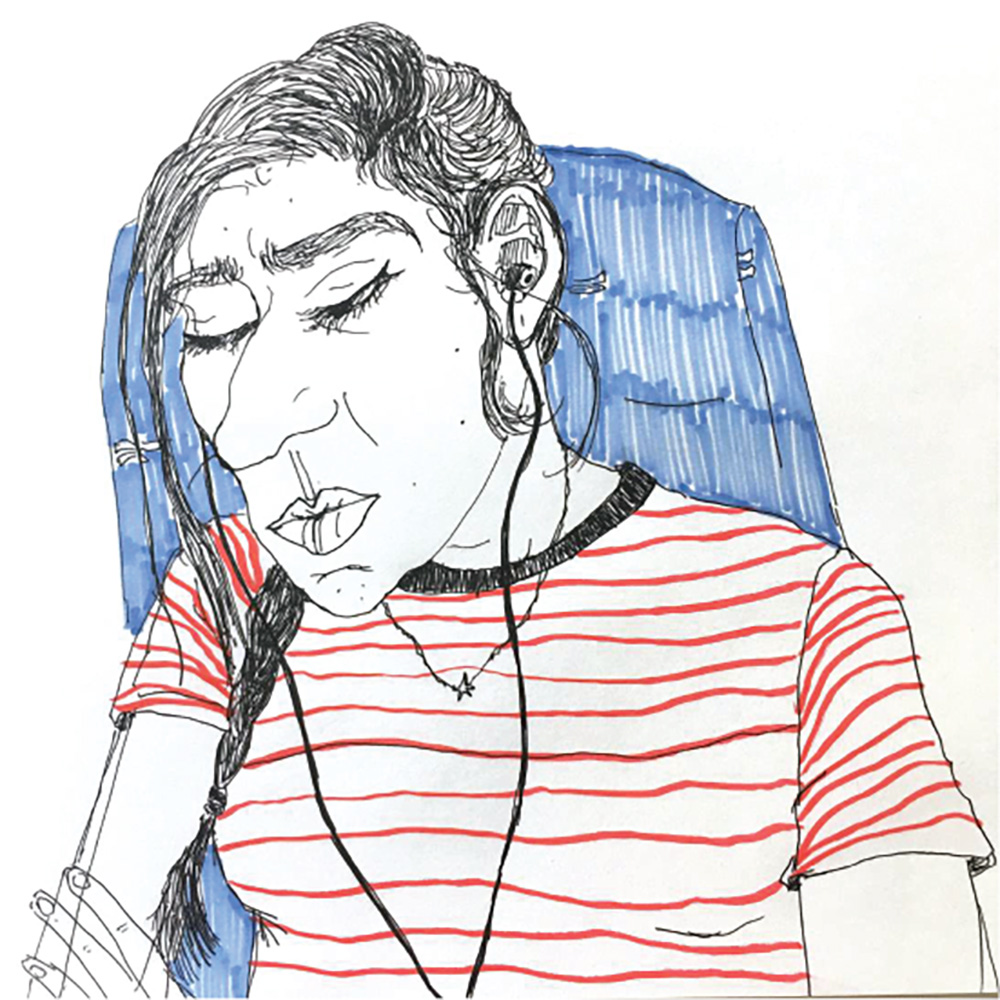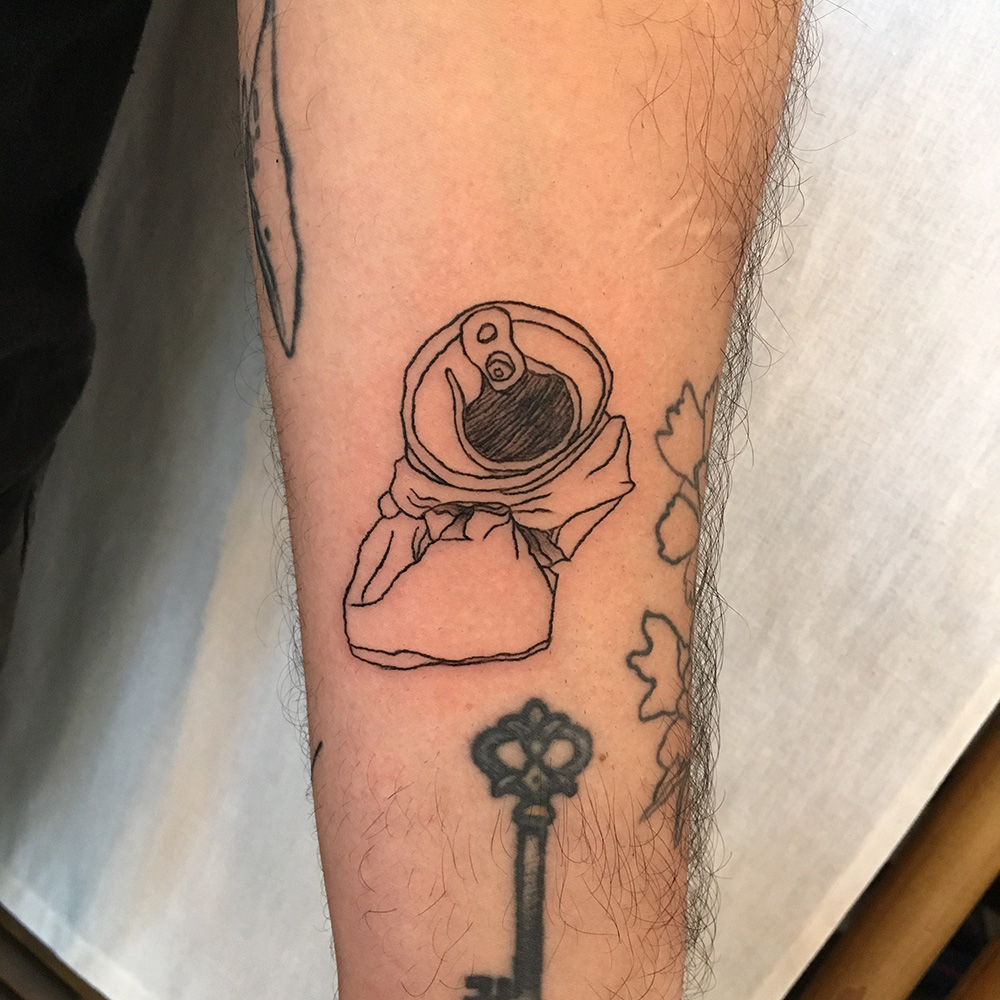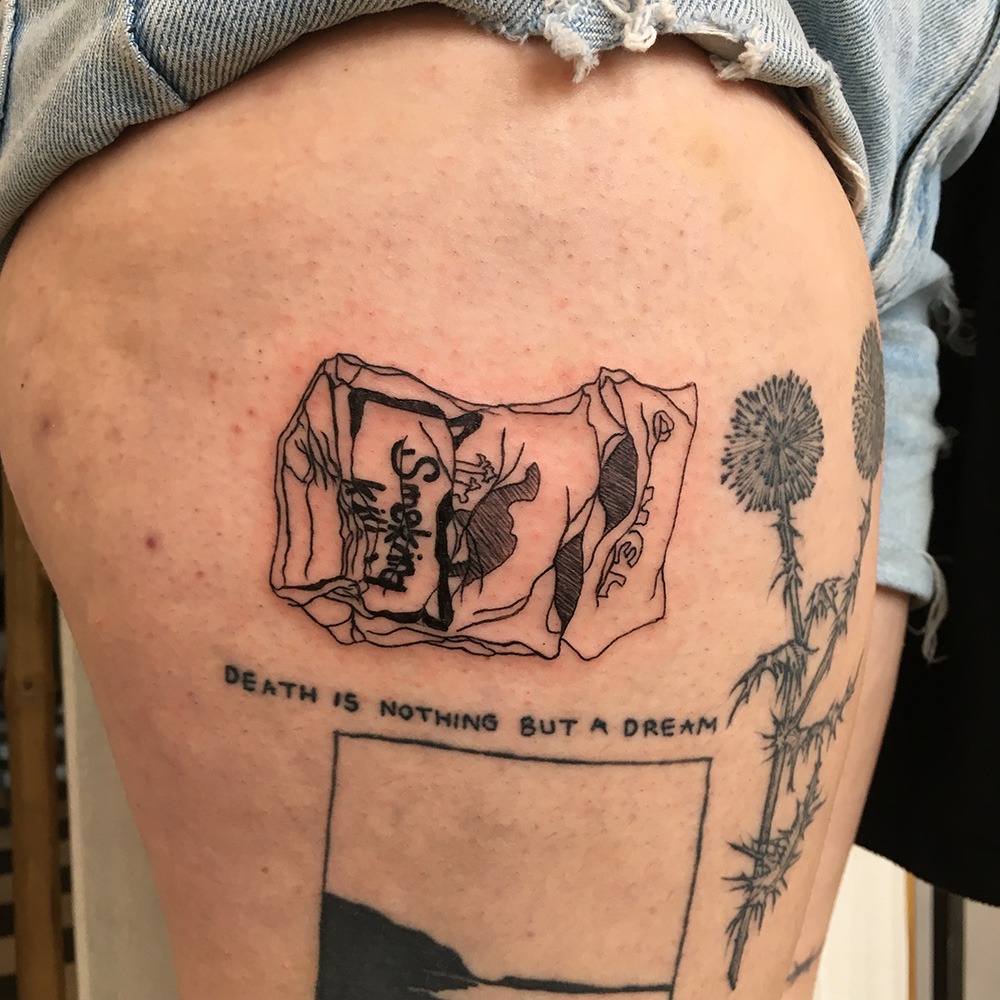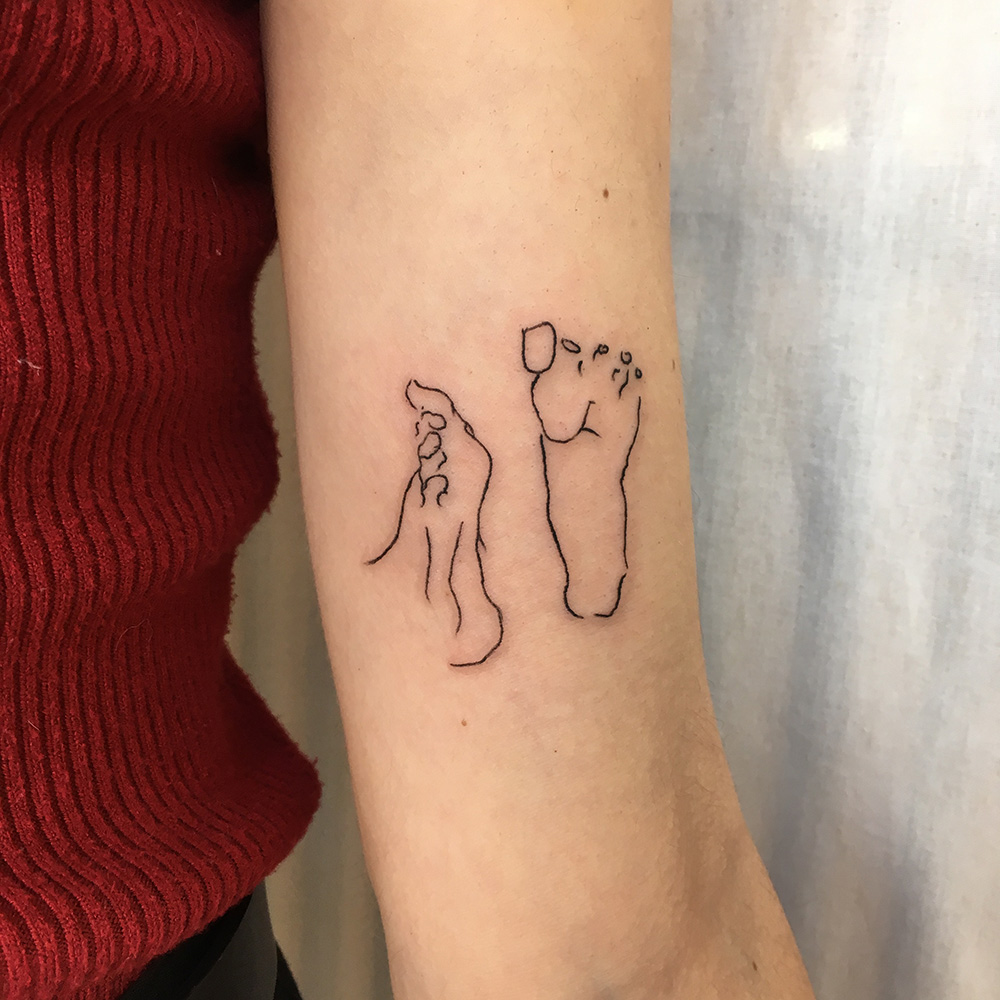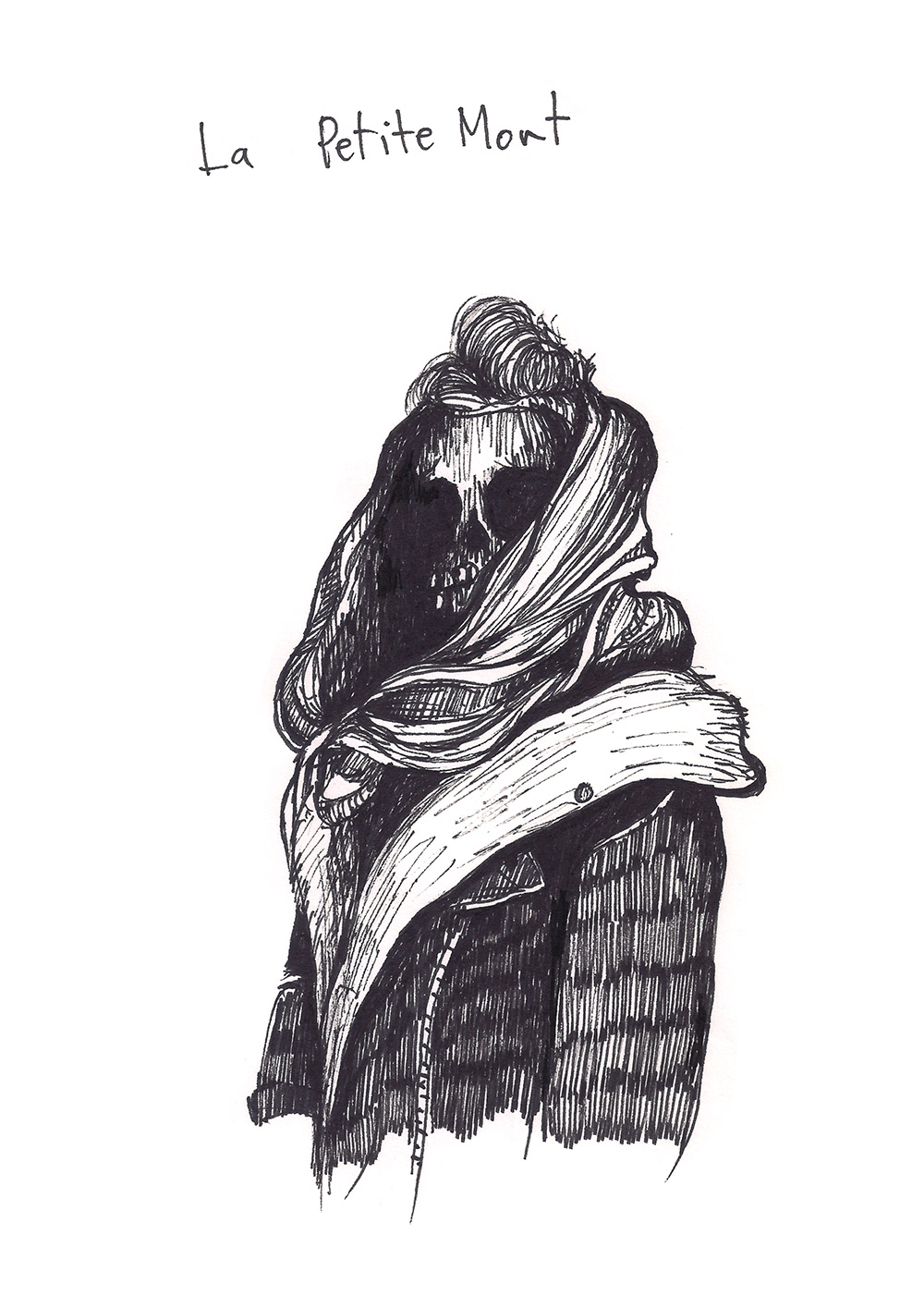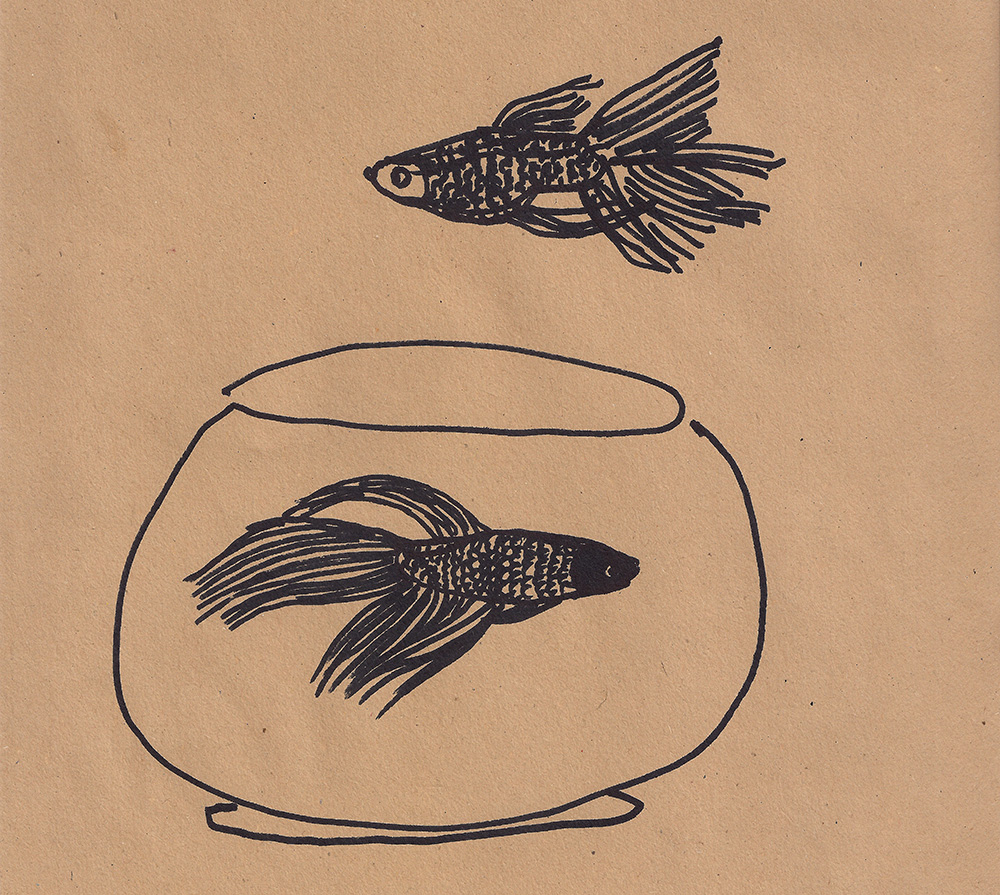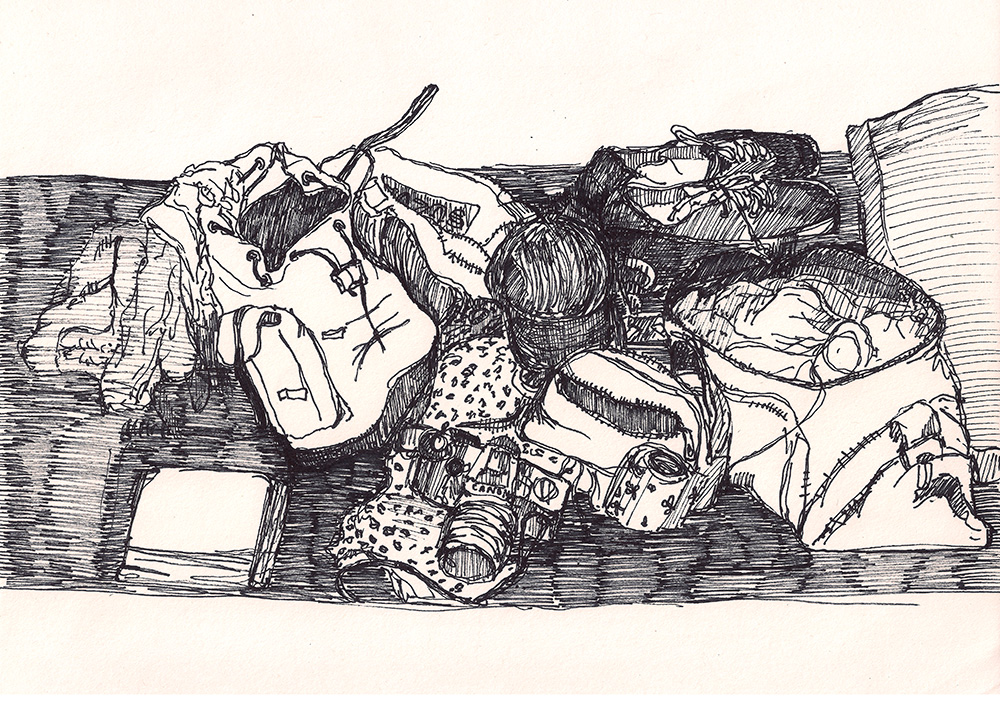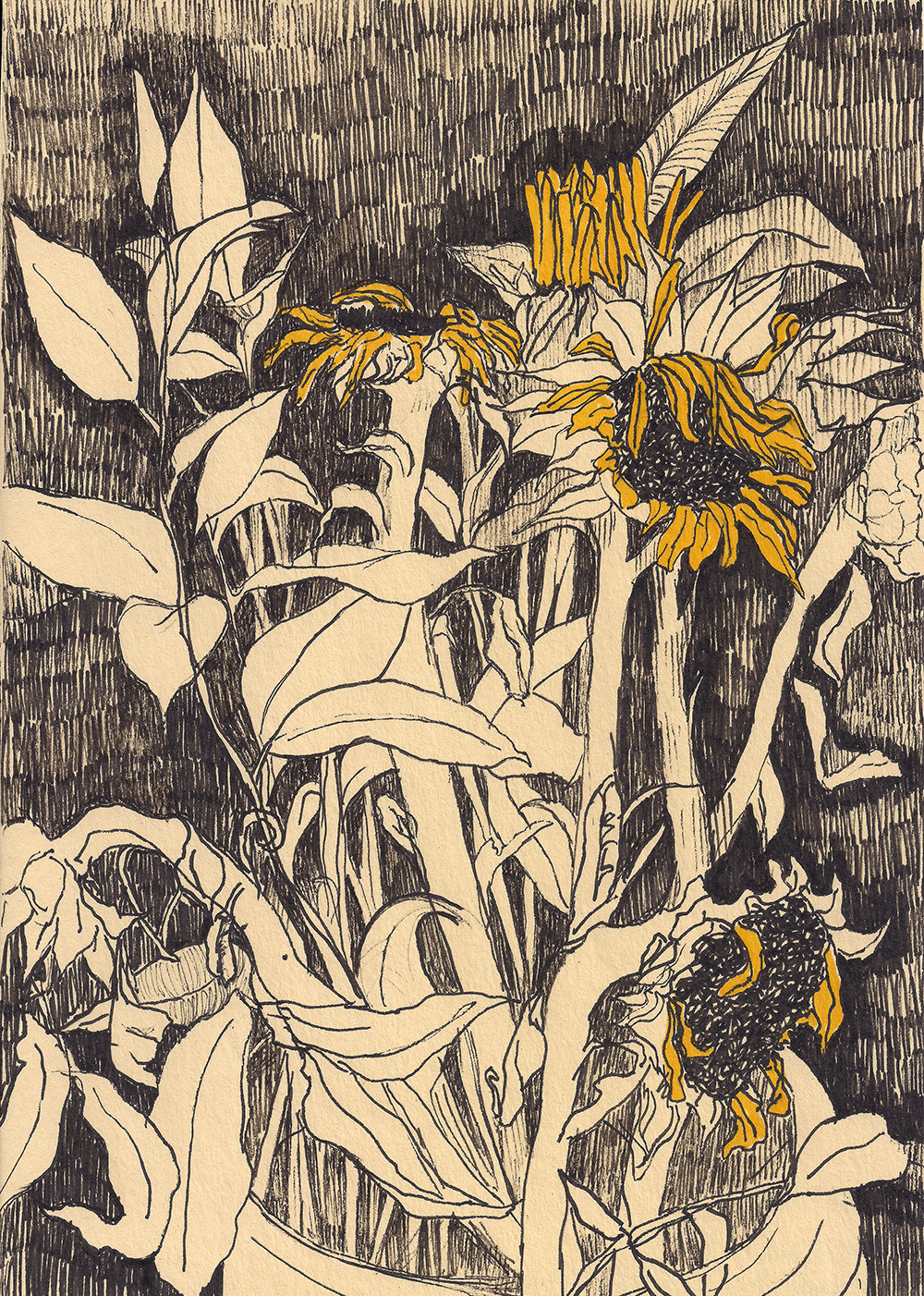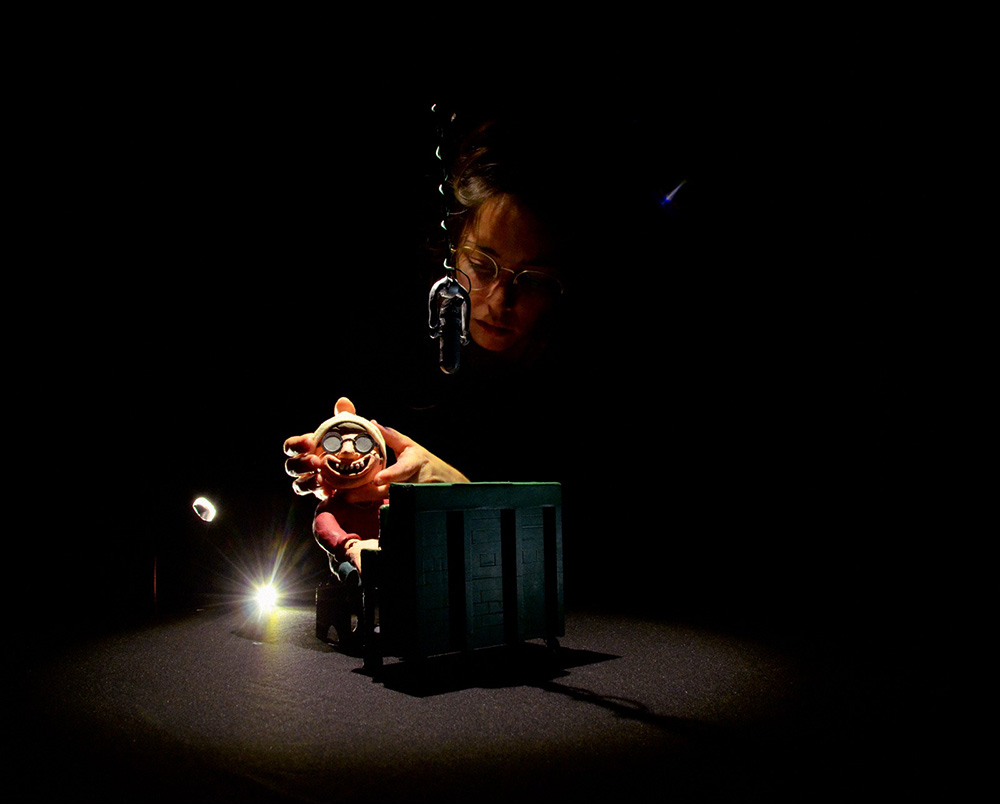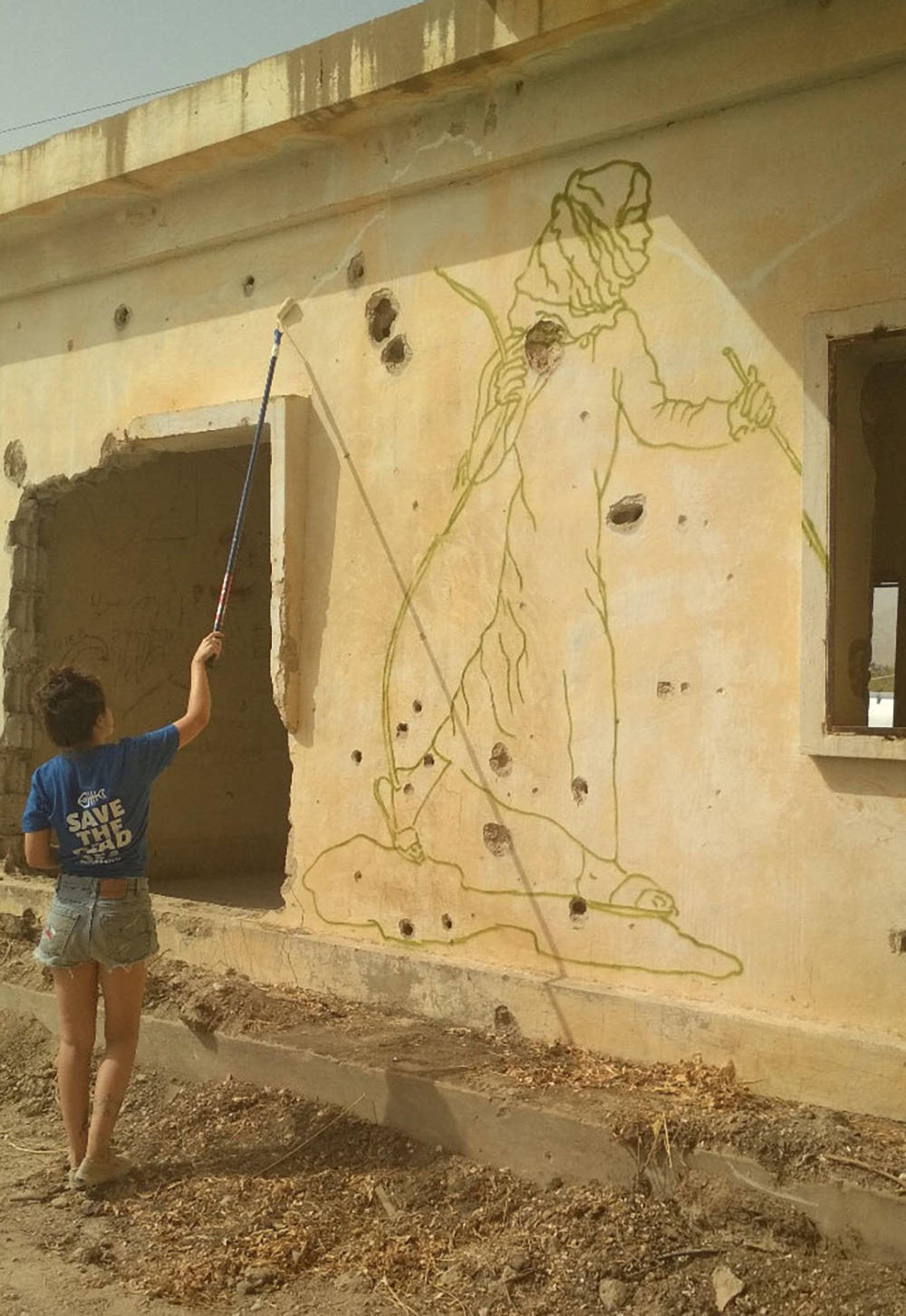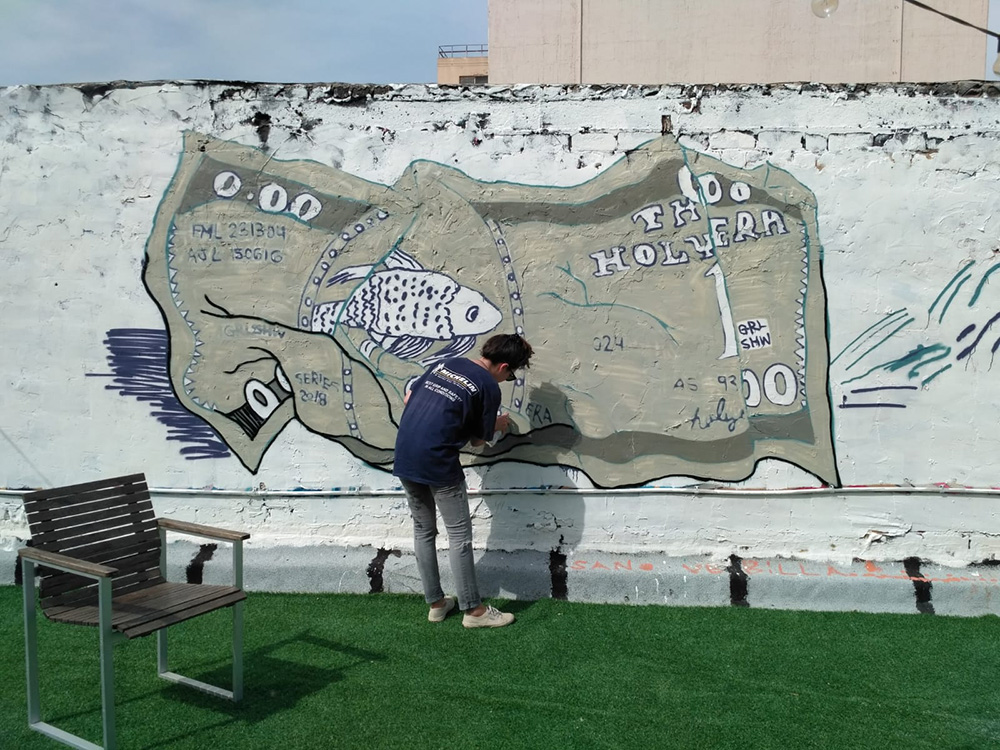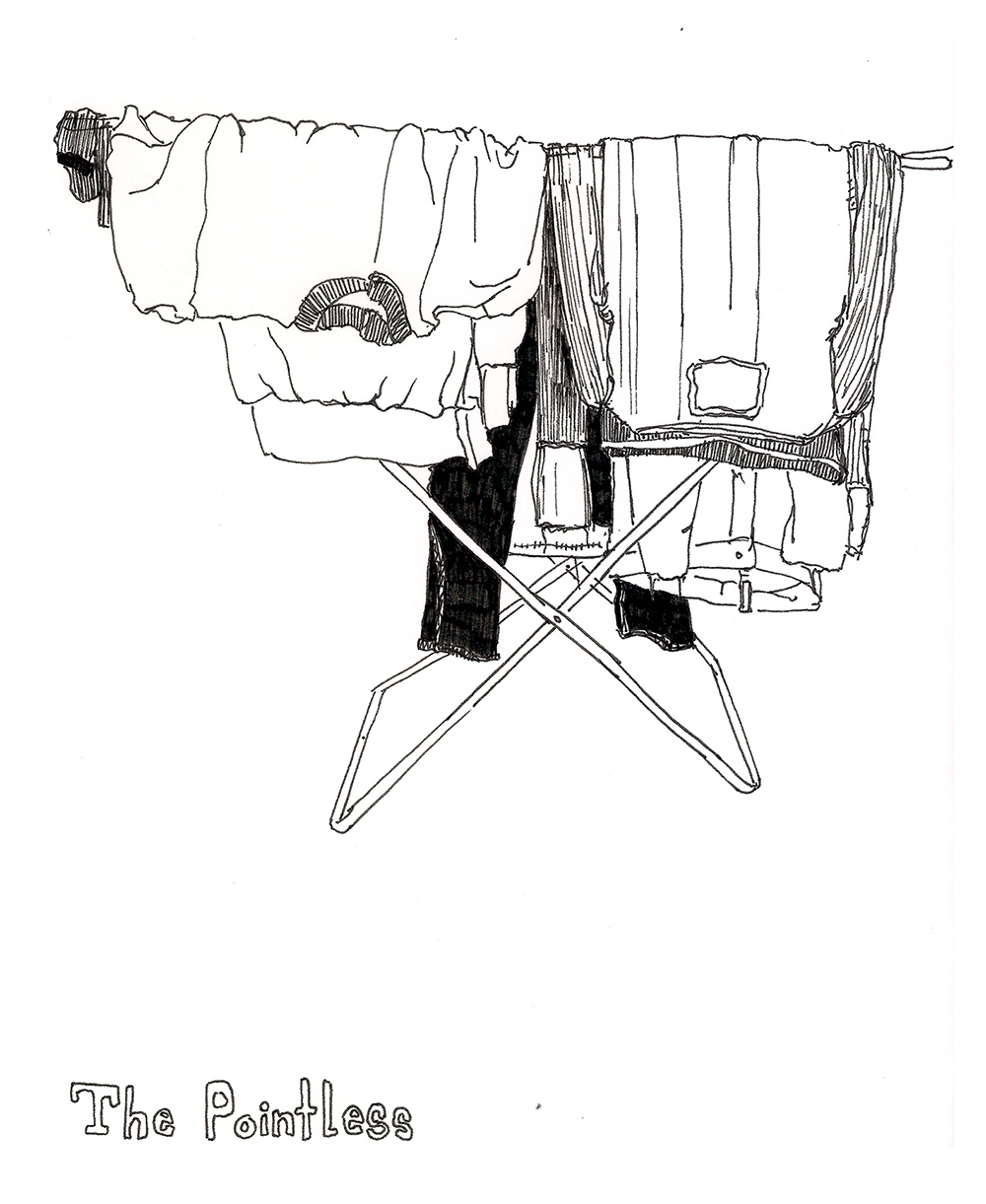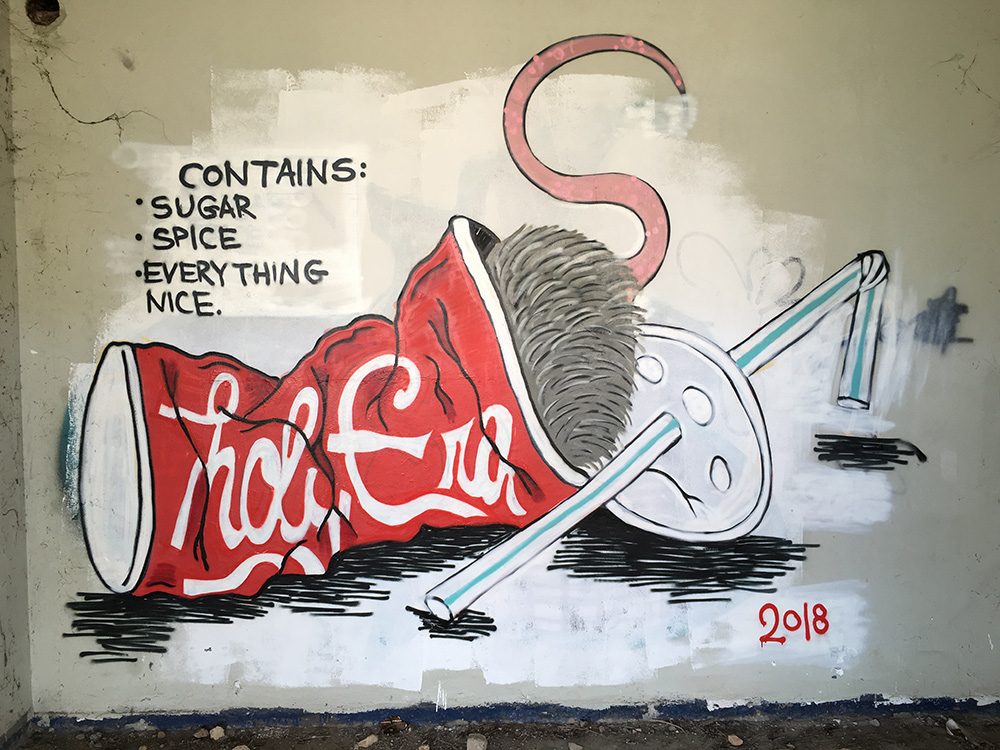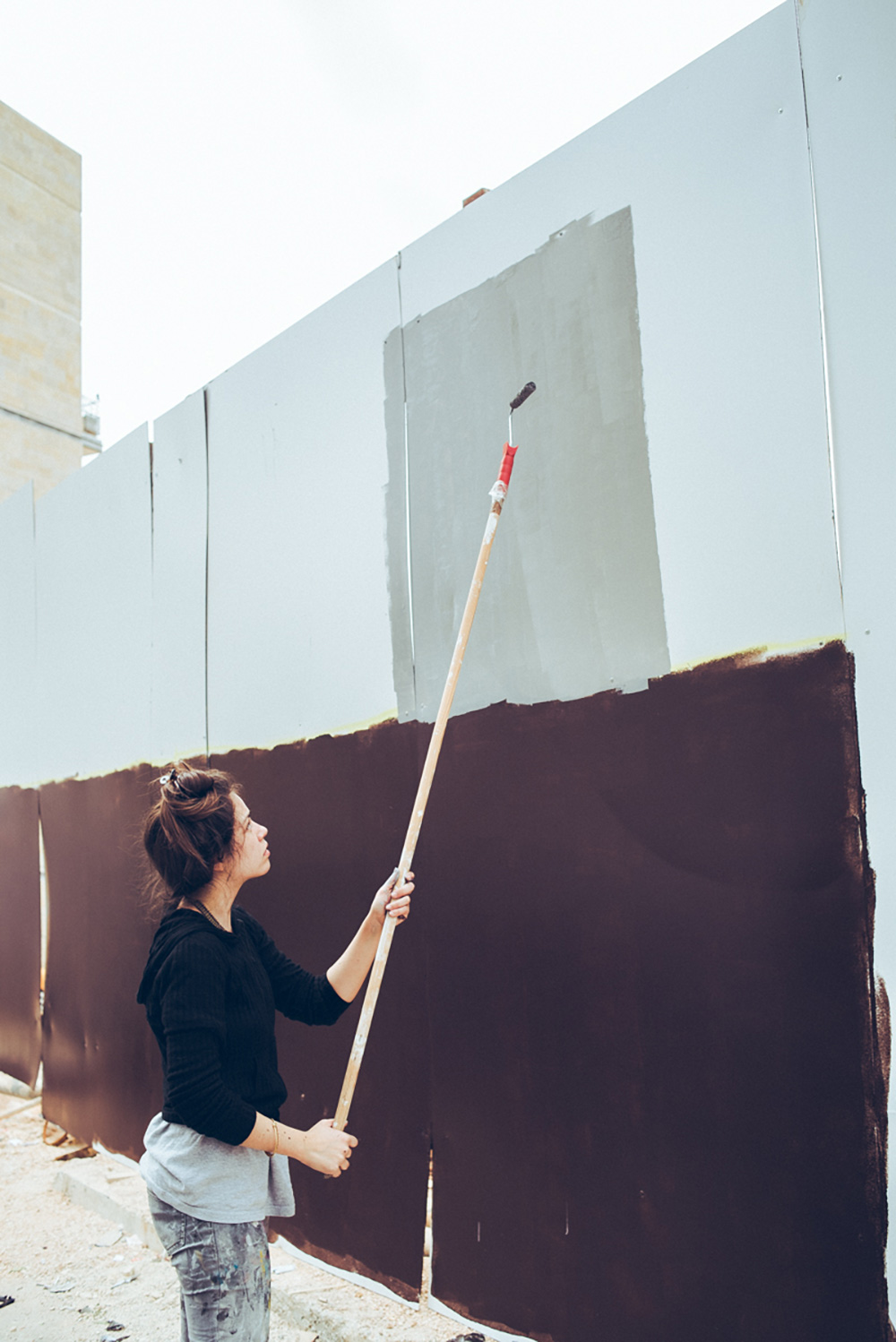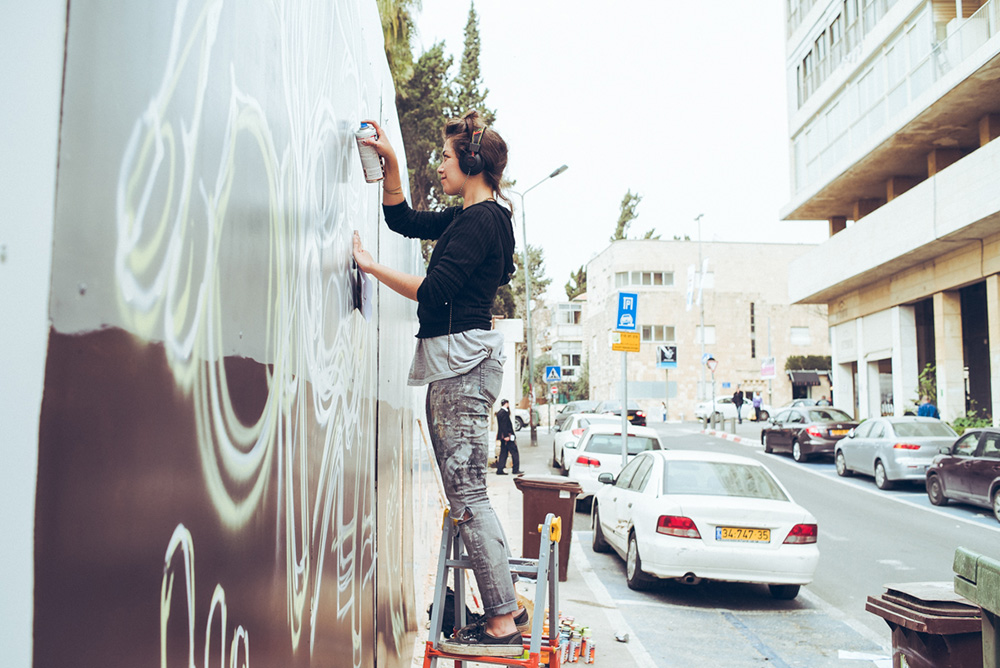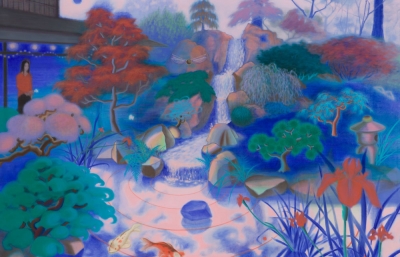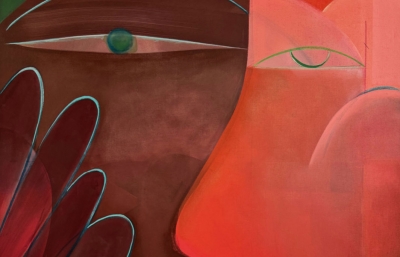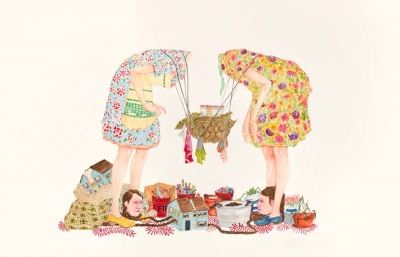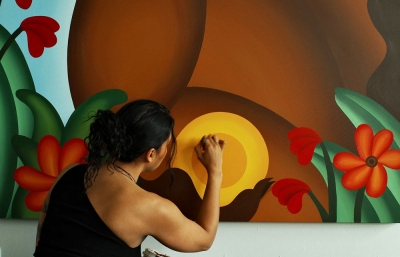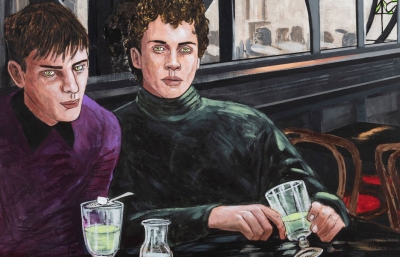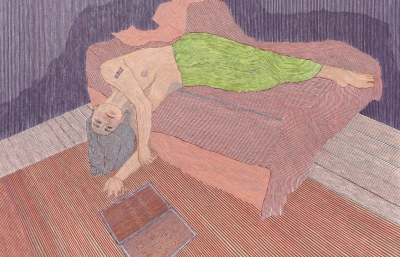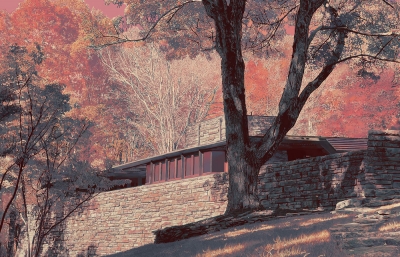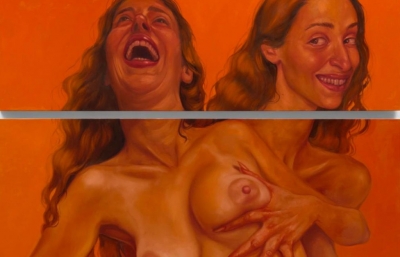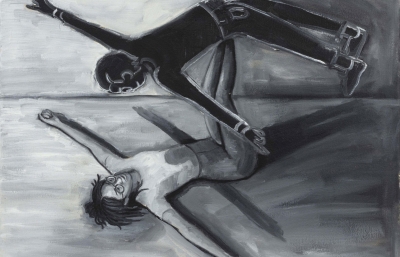Israeli graffiti artist Holy Era has made a habit of never staying in one place too long. She continuously traverses the realms of illustration, painting, graffiti, and more recently, tattooing, around her home country of Israel and beyond. In her numerous media she incorporates themes of satire, spirituality, and feminist-inspired social themes, making a unique mark each time.
Read on below to learn more about her influences, process, and making work on the street.

When did you start painting? And what were your earliest works like?
I grew up in a very artistic family, I’ve been painting for as long as I can remember. I started painting walls when I was 17 years old, and at 19, after dropping out of the army service, it became a daily occupation and less of a hobby. Back then, I use to paint colorful, sensitive characters which quickly became large-scale murals. At some point, I felt the need to explore different paths and I developed a rough, more sketch-like style. I’m still working towards integrating them both.
Working in Israel, it seems like there’s no way to avoid a political discussion with artwork. Describe your art’s relationship with the sociopolitical issues associated with your home.
It's true that there is no way to avoid political or social issues, especially when painting in the public space. One of the reasons I love painting on the streets is that it always adds a deeper meaning to an image. For example, I painted “400 years in the desert,” a stop-motion walking cycle of a Bedouin girl walking through the desert. At first, I planned to paint the background as well, but when I got to the spot, I saw the whole building was punched with bullet holes from the war in 1967. So I decided to leave it the way it was, and now the Bedouin girl is walking through the bullets forever.
I created it for the “Gallery -430” project which aims to raise awareness about the critical condition of the Dead Sea in Israel.
Another example is “Female Energy,” a portrait of a religious woman I saw on the bus which I painted last year in Jerusalem. There are many movements in the religious population that try to keep women away from public spaces. It’s gotten more and more radical, even in the non-religious areas. While I was painting, many religious women and young girls stopped to watch because they were excited by it. I didn’t realize how new it was at the time, for a religious woman to be recognized and presented that way in the middle of the city. We are here, these streets are our home too, it's our right to be free in our home.

When did you start tattooing? What’s one of your favorite parts of tattooing vs. painting?
These days I'm taking my first steps in the tattoo world. My big sister Rommy is an amazing tattoo artist and jewelry designer, she has her own tattoo studio in Jaffa. She encouraged me to join her, and is teaching me everything about tattooing. I love working with her, because even though our styles are very different, we learn a lot from each other.
My favorite part of tattooing is when I finish a work and let it go, which is similar to street art in this sense. Every person is a new challenge, exactly like walls, there is a need to improvise and adjust yourself. I find it refreshing and fun.
How do you decide what to paint on a wall versus on a canvas or paper?
On paper, my process is very intuitive, I don’t think much about what and how to draw. I get very inspired by my surroundings and the everyday human struggle. I do a lot of life-drawings and self-portraits. On walls, it’s different because it takes more planning. Sometimes I’ll take a piece of my sketchbook as it is and copy it, like “Hot Temper” or ‘Female Energy” for example. For the squashed objects series, I intended to communicate with the viewer and tell my story, like “Always Fresh; 100% female” or “0.00$ Holy Era.”

Do you follow the art world much or do you try to avoid it? Whether it be fine art, graffiti, street art etc... Do you stay up to date with news?
Yes, I’m a big art nerd, especially with Street art, Fine art and Animation. When I started painting walls, I didn’t know anyone who did that, so I had to teach myself a lot from magazines, books and the internet, basically anywhere I could find information. It became a daily habit, I love to read about other artist’s processes and thoughts.
What was the last trip you went on? Where did you go and what did you do there? Do you travel often?
My last trip was to Berlin with my boyfriend. We went to celebrate New Year's Eve which was different than we expected. There were fireworks exploding in every corner, it felt like a war! It got me very anxious and I had a little panic attack. It was scary, but it gave me an idea for a wall I painted days later in Mauerpark. Like my mom says; “what's bad for your heart is good for your art.” Besides that, I’m on the road a lot in Israel, and the dream is to paint around the world. Hopefully, my next trip will be to America this summer!
Where did your name come from? Is there a bigger meaning behind it?
The name “Holy Era” is a name I created for myself when I was 13 years old, after watching an Israeli cult film that I still love called Saint Clara. Back then, I signed it on my drawings and stories, and asked my friends to call me by it for some time.
A few years later, I started doing graffiti and needed a name, Holy Era felt like the most natural choice. Over time, I've found new meaning in it. ‘Holy’ refers to locality, I am from the Holy Land, and ‘Era’ refers the time we are living in. Space and time, right here, right now.

Who are some artists that inspired you when you were young and who inspires you today?
When I was younger, I was inspired by German duo Herakut, Comic books like Transmetropolitan, NY graffiti writers Lady Pink and Toofly.
Today I'm inspired by many artists, but if I need to choose, I'll go with Aryz, Allison Schulnik, and George Grosz, whose work I saw on my last trip to Berlin. My mother, Leeor Shtainer, inspires me the most, she’s a great painter and taught me so much about art.
What’s on the horizon for you?
In the short term, I took part in a big stop-motion project that drops very soon. It’s a clip for an Israeli band called Geshem, directed by Kip from the Broken Fingaz crew. We worked super hard on it for 4 months. I can’t wait for it to be published.
In the long term, I’ll keep painting, animating, collaborating, and most importantly, have a good time!

